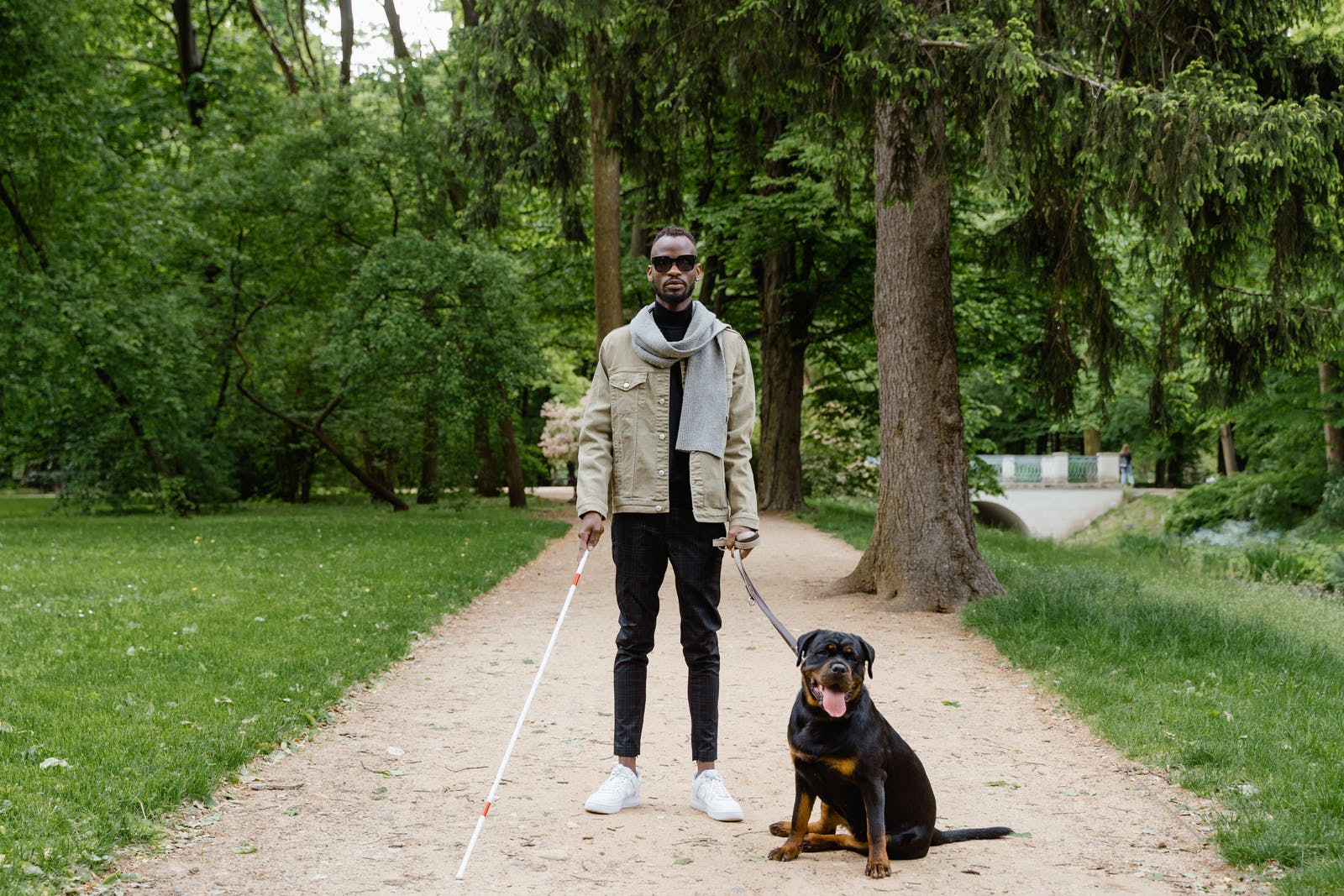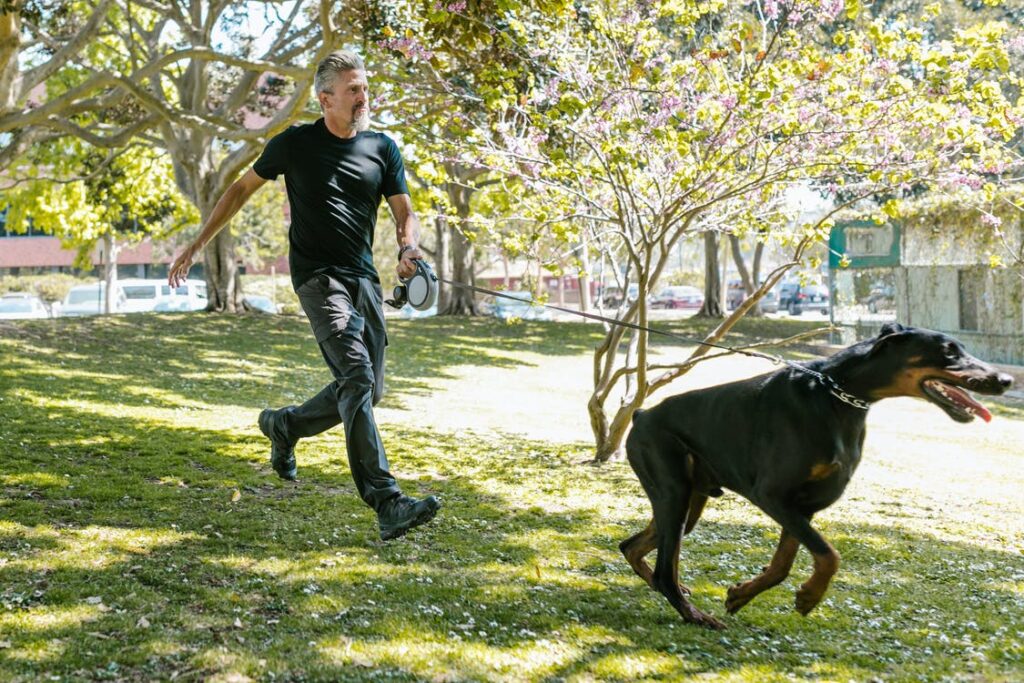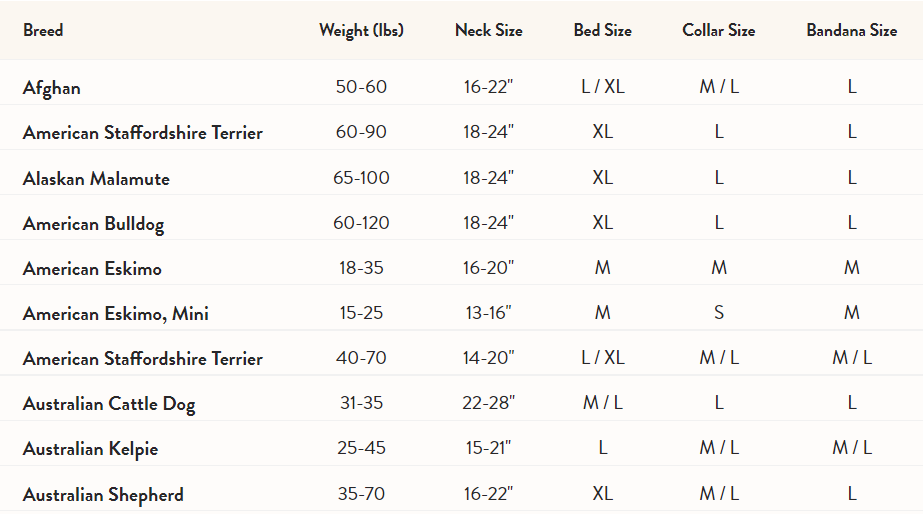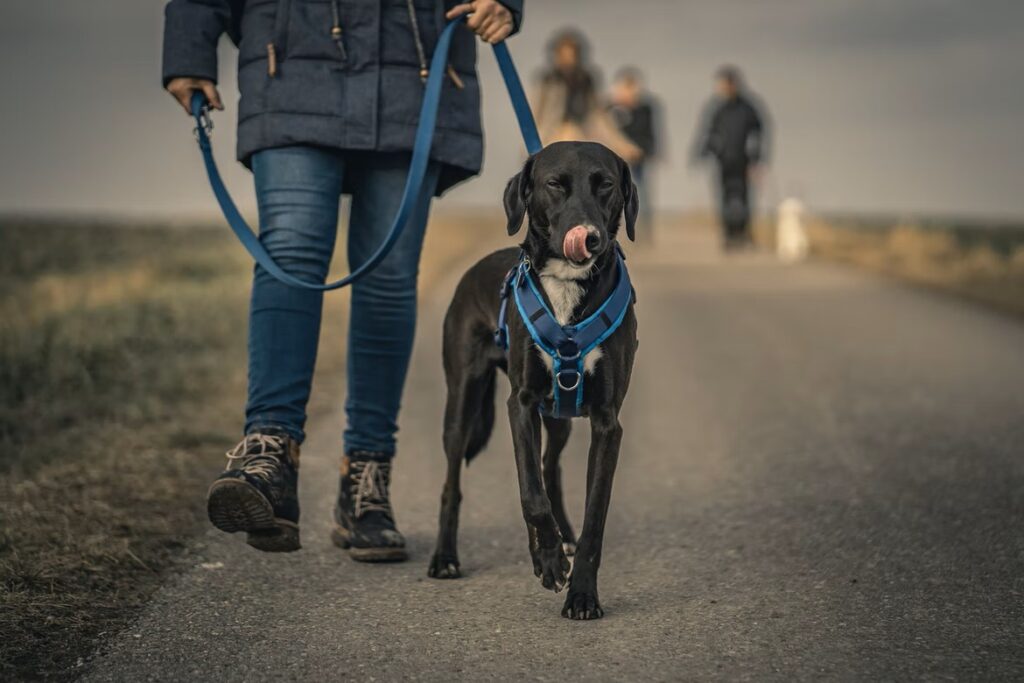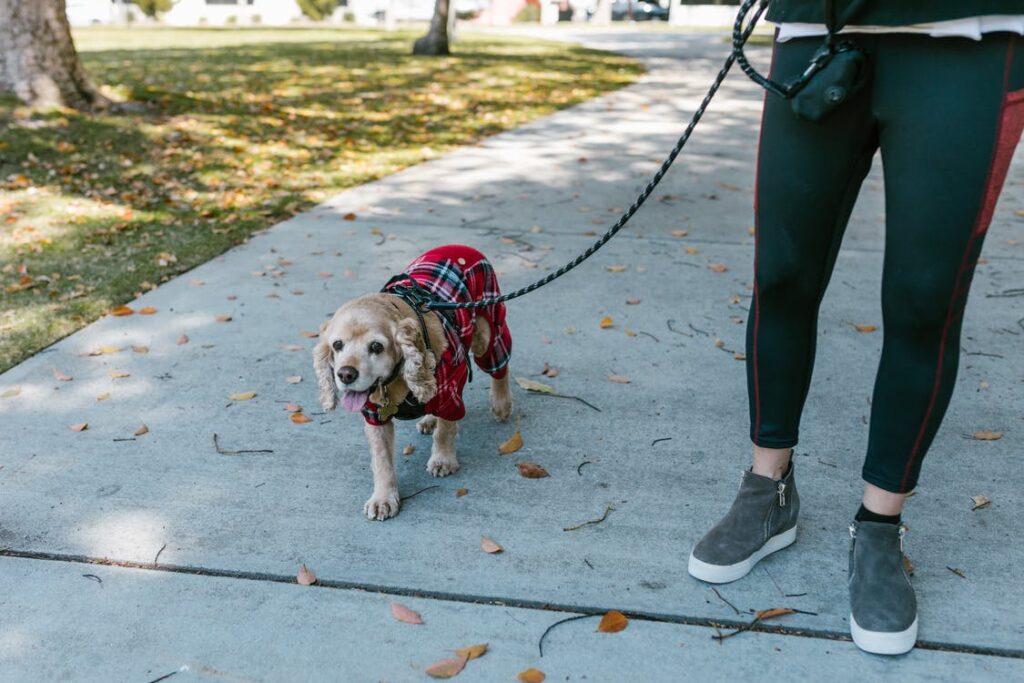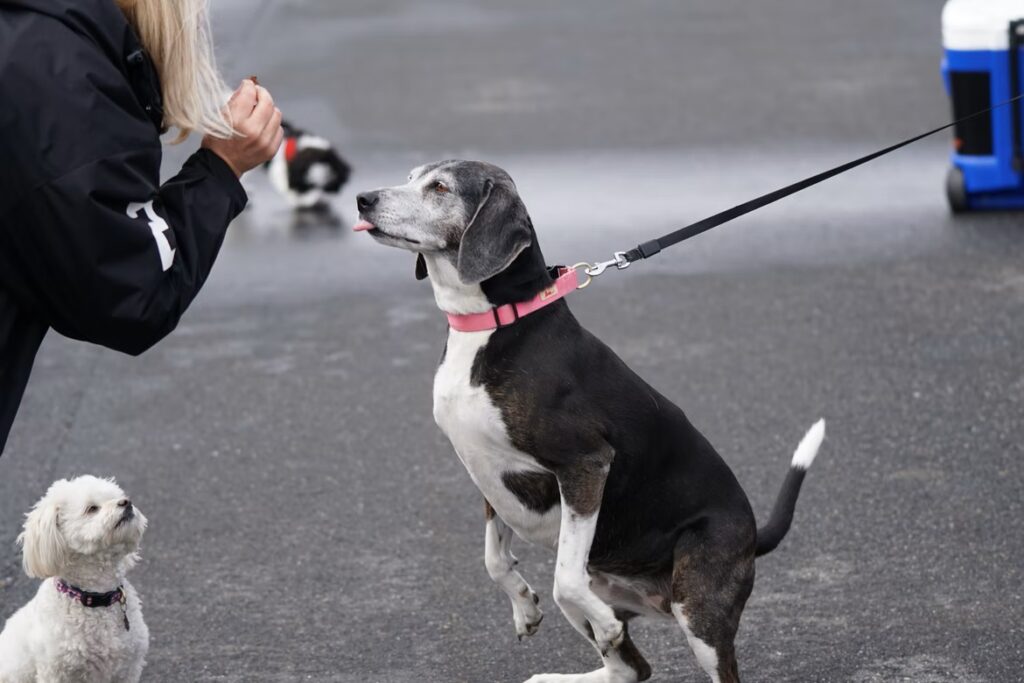Training A Puppy to Love Walking On A Leash
The idea of having a puppy is easily the most exciting part of owning one. You can’t wait to show them off to friends and family, you can’t wait for people to ask the name so that you can tell them what your new dog is called and maybe you’ve even learned a few commands like sit, stay and come. But then life happens and you’re not as preoccupied with this new addition to your family. Months go by and before you know it, your best friend is turning into a minor annoyance.
The idea of having a puppy is easily the most exciting part of owning one. You can’t wait to show them off to friends and family, you can’t wait for people to ask the name so that you can tell them what your new dog is called and maybe you’ve even learned a few commands like sit, stay and come. But then life happens and you’re not as preoccupied with this new addition to your family. Months go by and before you know it, your best friend is turning into a minor annoyance.
Dog leash training is much easier than you might think. All dogs need to be trained, no dog is born with the knowledge of a leash. Dog leash training is important for safety reasons so that you don’t lose the dog or get pulled along regardless of your age. Dog leashes are also useful for training your dog to perform a variety of commands.
Introducing the Harness and Leash
A harness is a tool that will help you control your dog when walking them outside. You must introduce the harness to your puppy slowly and positively. If you rush them, it may cause them to become afraid of the harness and leash. This can make it difficult for you to train your dog in the future.
The first step is to make sure that the harness fits well on your puppy. You want it to be loose enough so that it doesn’t cut off circulation but not too loose where it will fall off easily. If you have an older dog with a wide chest, they may need a different size than what they normally wear for the harness to fit properly.
The next step is getting them used to having something around their neck without putting any pressure on their body other than what comes naturally when walking or running around outside with you.
How to Leash Train a Puppy
Get a Good Training Collar
Your dog needs a collar that fits well and isn’t too loose or too tight. A collar that’s too big can lead to chafing, while one that’s too small can cause the dog pain. You should also get a martingale-style collar that prevents your puppy from slipping out of his collar if he tries to run away from you when he’s wearing it.
Choose an appropriate length for the leash when you’re walking your dog. For most dogs, an 8-foot leash is ideal because it gives them enough room to explore without being able to run away from you completely (or worse, run into traffic). However, if you have an especially energetic dog who likes to run around in circles all day long as puppies do, then consider using a long lead so that they don’t get tangled up every time they turn around on their own accord!
Have short training sessions in familiar places. Have short training sessions in familiar places first, like inside your home or backyard, so that your puppy isn’t overwhelmed by new experiences and distractions outside of her comfort zone.
Keep Him at Your Side
One of the most important things you need to know about training your puppy is how to keep him at your side when leash-training a puppy.
Puppies are naturally curious and very playful. They love exploring new places, meeting new people, and seeing what other animals are up to.
This means that if your puppy is off-leash, he could run away from you in pursuit of something more interesting than you. If he’s on the leash but not under control, he might pull against the leash so hard that he hurts himself or gets tangled up in it so that he can’t move freely.
For these reasons, it’s important to teach your puppy how to follow you around without pulling on the leash. This is called “heeling” and it’s one of the first things that you should teach your puppies during training classes.
Praise Good Behavior
Use positive reinforcement and treats. Praise your puppy when she does what you want and give her treats as rewards for good behavior.
Make it fun for both of you. Play games with your puppy while she learns how to walk on a leash. Try “find-it,” where you hide treats around the room and have your puppy sniff them out before rewarding her with them. Hide treats in different rooms so that she gets used to going from one room to another without pulling on the leash.
Walk More Frequently
The more you walk your dog, the more likely it is that your dog will behave well on walks. However, there are many other reasons why you should consider walking more often.
Walking your dog more frequently is good for their health.
Dogs need exercise! The more time they spend in their yard or house, the less healthy they are likely to be. They will gain weight and develop several health problems like heart disease and joint problems if they don’t get enough exercise.
Give Him Time to Do His Business
One of the most important things to remember when you’re leash-training a puppy is to give him time to do his business. You can’t expect your puppy to go potty on command, but if you’re able to get him outside regularly and let him sniff around for a bit, he’ll come back with a full bladder and be ready to go.
If you have a small yard or a large dog park nearby, that’s great! But if not, it’s important to pick up after your dog whenever he needs to go so that he doesn’t have an opportunity to mark his territory indoors.
It’s also important not to punish your dog for accidents in the house because it teaches him that going potty inside is wrong — which means he’ll be even more reluctant next time he needs to go out. If he has an accident in the house, clean it up as soon as possible so that there’s no lingering smell or stain left behind.
When Your Dog Pulls or Refuses to Walk
Familiarize the Dog
If you’ve ever been dragged by a dog who won’t walk on a leash, you know how frustrating it can be. But pulling is a common problem for many dogs, and there are several ways to deal with it.
One of the most effective methods is called “familiarization.”
Familiarization involves giving the dog something more interesting to focus on than the leash and other people, dogs, or other distractions.
If your dog pulls on walks, it’s important to teach him that there are other things in life besides the leash. If he’s constantly focused on his surroundings, he’ll be less likely to pull because he’ll be distracted by what else is going on around him.
Adjust Collar Position
When your dog pulls on the leash and refuses to walk, it’s tempting to pull back. But this is a bad idea. The force of your pulling will only make your dog want to pull more.
If you have a prong or choke collar, move it up higher on your dog’s neck to decrease the pressure on his throat when he pulls. If you have a flat buckle collar, try moving it down lower on his neck so that it’s not cutting into his skin as much.
Shorten the Leash
If your dog pulls forward when you walk him, shorten the leash so he has less room to roam. This will encourage him to walk next to you instead of racing ahead.
Use a different command. Instead of saying “come” when your dog refuses to come back, try saying something like “good boy” or “let’s go.” This will help reinforce positive behaviors instead of rewarding negative ones with attention and treats.
Pick Up the Pace
When you are walking at your normal pace and your dog begins to pull or refuse, stop walking for a moment and tell him “easy.” At this point, it would be helpful if he learned his name so that you can use it in conjunction with ease. If he does not respond to easy when he’s being stubborn, use another word like good boy or girl while simultaneously offering him a treat that’s just out of reach of his mouth (not held in your hand). After giving him the treat, immediately begin walking again while gently holding onto his leash with one hand and rewarding him each time he walks with you without pulling or refusing until he catches up to you.
Secret Revealed: How to stop your dog from pulling on a leash, expert guaranteed! Click to watch:

